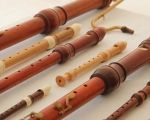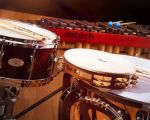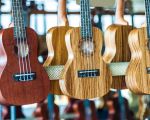- 1-The-Complexity-of-Crafting-Musical-Instruments
- 2-Materials-and-Quality-Impacting-Cost
- 3-The-Role-of-Skill-and-Craftsmanship
- 4-Brand-Reputation-and-Market-Demand
- 5-Technology-and-Innovation-in-Instrument-Making
- 6-Why-Investing-in-Quality-Instruments-Matters
- 7-How-Beat-Trigger-Can-Help-You-Find-the-Right-Instrument
1. The Complexity of Crafting Musical Instruments
Musical instruments are intricate creations that require precise engineering and detailed craftsmanship. The process involves assembling many components, each needing to function harmoniously to produce the desired sound. This complexity significantly influences why musical instruments are so expensive, as manufacturers invest substantial time and expertise in crafting each piece.
For example, a violin’s delicate woodwork and precise shaping are essential to its tonal quality, demanding meticulous attention to detail that drives up costs.
2. Materials and Quality Impacting Cost
The type and quality of materials used also play a critical role in the pricing of musical instruments. Premium woods, metals, and synthetic materials are often sourced from specialized suppliers, adding to the expense. High-quality materials enhance durability and sound, making instruments more desirable but also pricier.
For instance, a high-end guitar might use rare tonewoods, which not only affect sound but also increase the price compared to mass-produced models.
3. The Role of Skill and Craftsmanship
Experienced artisans and luthiers bring instruments to life through skilled craftsmanship. The labor-intensive nature of handcrafting, tuning, and finishing adds value but also costs. Limited production runs and custom designs reflect the personal touch and expertise, making these instruments expensive yet highly sought after.
This human element is irreplaceable and often explains why handmade instruments command premium prices.
4. Brand Reputation and Market Demand
Established brands with a legacy of quality often price their instruments higher due to their reputation and reliability. Consumers are willing to pay more for trusted names that promise consistency and performance. Additionally, market demand influences pricing; rare or iconic models may appreciate in value, making them more expensive.
Brands like Fender or Steinway are prime examples where name recognition adds substantial premium.
5. Technology and Innovation in Instrument Making
Modern instruments incorporate advanced technology such as digital interfaces, enhanced electronics, and ergonomic designs. These innovations improve functionality but also increase production costs. Instruments equipped with cutting-edge features naturally command higher prices due to research, development, and specialized components.
Electric pianos with weighted keys and MIDI capabilities illustrate how technology shapes instrument pricing.
6. Why Investing in Quality Instruments Matters
While musical instruments can be expensive, investing in quality often results in better sound, durability, and playing experience. This investment pays off in the long run through enhanced performance and lower maintenance costs. For professional musicians and enthusiasts alike, choosing the right instrument is crucial for artistic expression and career success.
Understanding these factors helps buyers appreciate the value behind the price tag.
7. How Beat Trigger Can Help You Find the Right Instrument
Beat Trigger offers expert guidance and a curated selection of musical instruments to suit various budgets and needs. Whether you’re a beginner or a seasoned player, their platform provides detailed information, reviews, and personalized recommendations to help you make an informed purchase.
Explore Beat Trigger to find quality instruments that match your musical goals without compromising on value.








